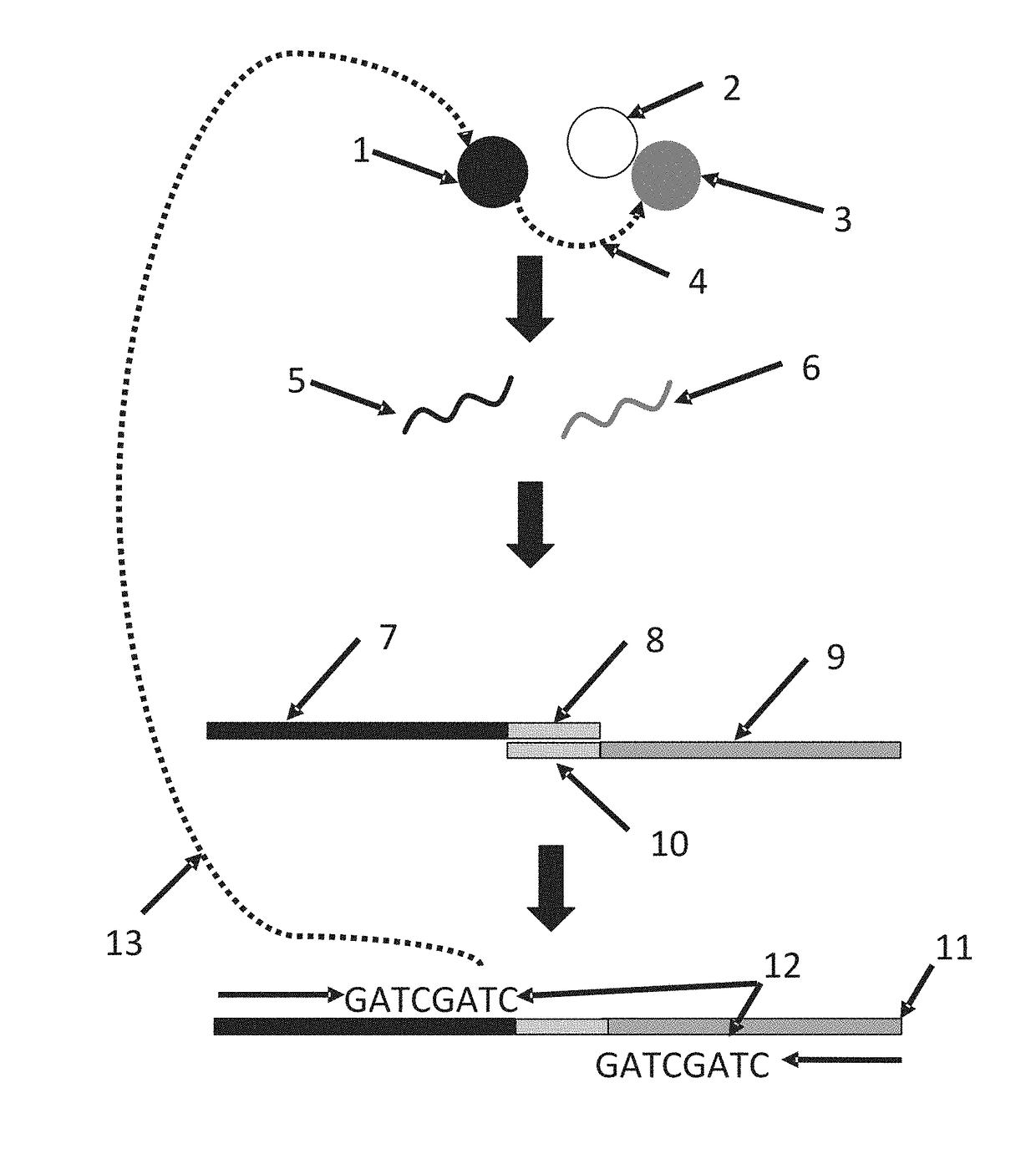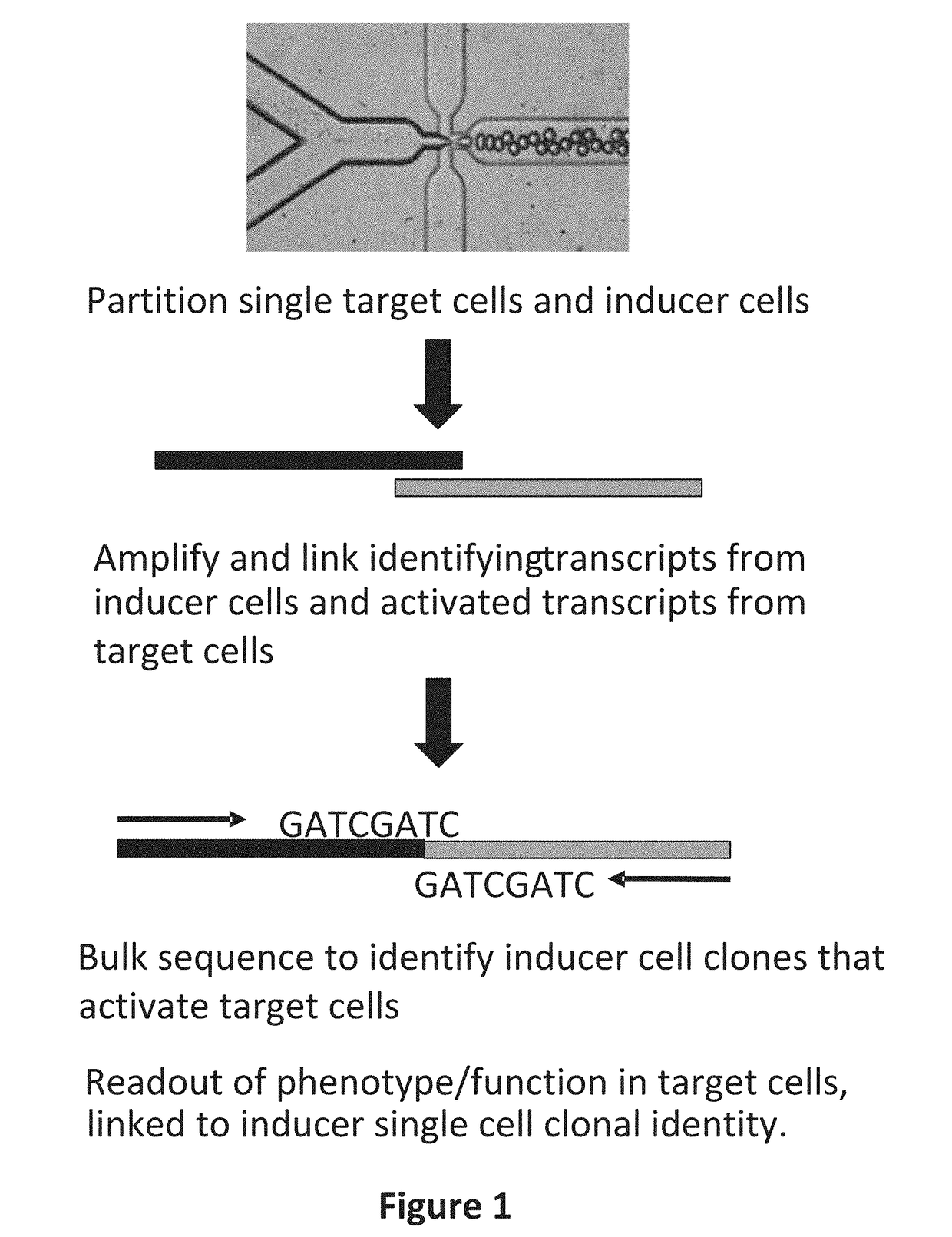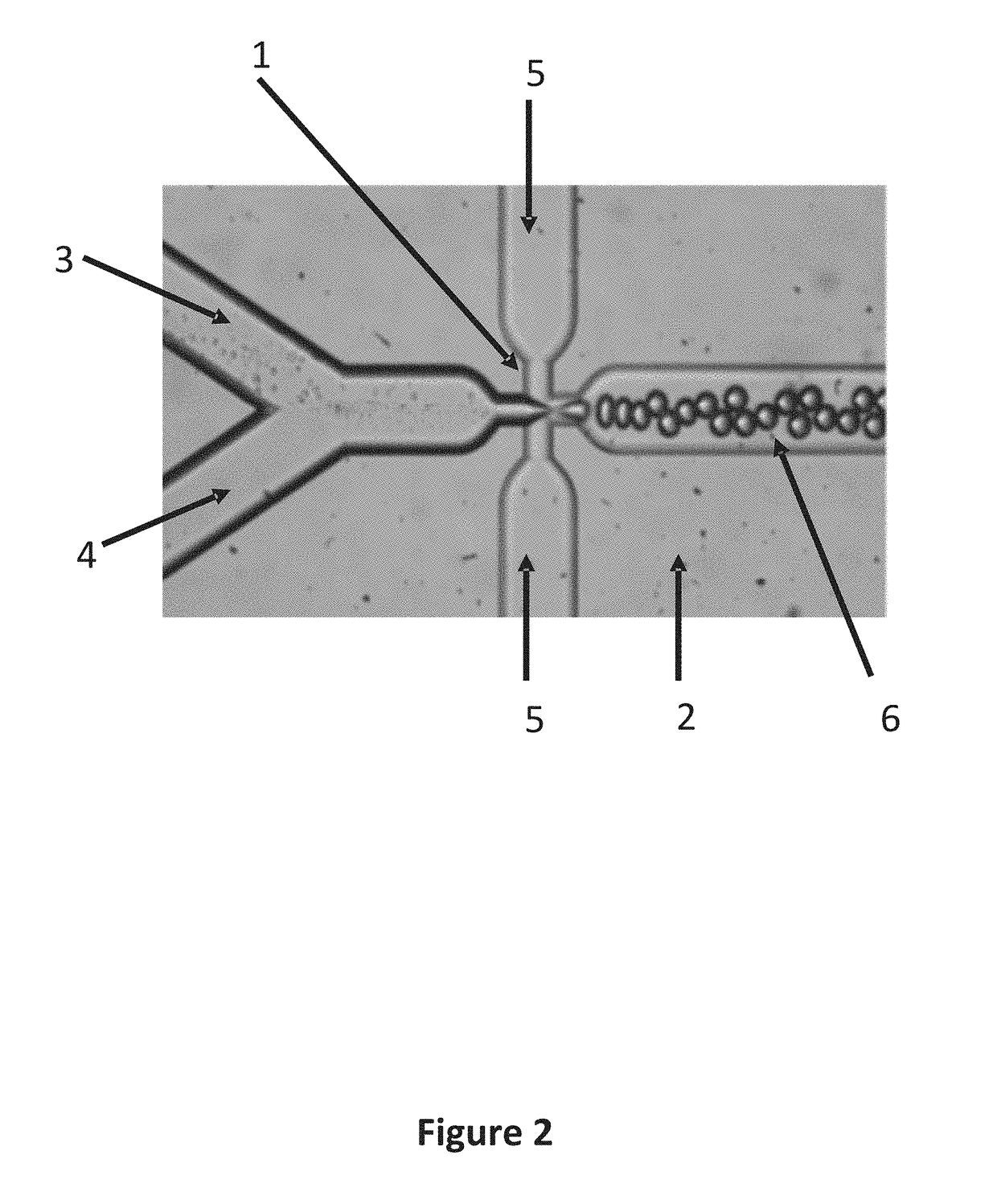Systems and methods for massively parallel combinatorial analysis of single cells
a combinatorial analysis and single cell technology, applied in the field of systems and methods for massively parallel combinatorial analysis of single cells, can solve the problems of insufficiently sensitive methods to do functional assays of a single target or inducer cell in parallel, inability to use conventional methods, and inability to achieve high-sensitivity results
- Summary
- Abstract
- Description
- Claims
- Application Information
AI Technical Summary
Benefits of technology
Problems solved by technology
Method used
Image
Examples
example 1
Functional Analysis of Fc Variants or Mutants
[0112]Therapeutic antibody drugs function by a variety of mechanisms. Two common mechanisms for therapeutic antibody drug function are Antibody-Dependent Cell-mediated Cytotoxicity (ADCC) and Complement Dependent Cytotoxicity (CDC). Both ADCC and CDC are mediated by the Fragment Crystallizable (Fc) region of antibodies. In ADCC, the variable domain of an antibody binds to an antigen exposed on the surface of a cell. If enough antibody molecules bind to the antigen, NK cells bind to the Fc domains via CD16, also known as Fc Receptor (FcR). In the classical pathway for CDC, antibodies bind an antigen on a target cell's surface. Then, the C1 complex of the complement cascade binds to the Fc domain of the antibody. Typically, at least six antibody molecules are required for C1 to bind. Binding of C1 to Fc then recruits remaining components of the classical complement pathway, which form a membrane attack complex that works to rupture the targ...
example 2
Functional Analysis of Memory B Cells
[0119]Many patients recover from severe disease for reasons currently unknown to science. For example, certain cancer patients respond better than other patients to medical treatments. In another example, certain patients respond better viral pathogens (e.g., Ebola, Zika, or influenza A) than other patients. Other examples include bacterial pathogens and autoimmune disorders. In some cases, patients successfully recover from severe disease because they successfully mount an immune response against the disease, e.g., T cell receptors or immunoglobulins that are present and active in good responding patients but not present in poor responding patients might function by binding to relevant disease targets.
[0120]Memory B cells, or Bmems, are particularly useful for the discovery of antibodies that helped an individual recover from serious disease. On initial stimulation by an antigen, naïve follicular B cells differentiate into plasma cells and Bmems...
example 3
Functional Analysis for Discovery of Antibody Targets
[0125]Many patients recover from severe disease for reasons currently unknown to science. For example, certain cancer patients respond better than other patients to medical treatments. In another example, certain patients respond better viral pathogens (e.g., Ebola, Zika, or influenza A) than other patients. Other examples include bacterial pathogens and autoimmune disorders. In some cases, patients successfully recover from severe disease because they successfully mount an immune response against the disease, e.g., immunoglobulins that are present and active in good responding patients but not present in poor responding patients might function by binding to relevant disease targets.
[0126]However, because of the complexity of many diseases and the complexity of immune systems, it remains difficult to discover the immunoglobulins and their respective targets. This knowledge would be extremely useful to researchers studying the mech...
PUM
| Property | Measurement | Unit |
|---|---|---|
| diameter | aaaaa | aaaaa |
| diameter | aaaaa | aaaaa |
| volume | aaaaa | aaaaa |
Abstract
Description
Claims
Application Information
 Login to View More
Login to View More - R&D
- Intellectual Property
- Life Sciences
- Materials
- Tech Scout
- Unparalleled Data Quality
- Higher Quality Content
- 60% Fewer Hallucinations
Browse by: Latest US Patents, China's latest patents, Technical Efficacy Thesaurus, Application Domain, Technology Topic, Popular Technical Reports.
© 2025 PatSnap. All rights reserved.Legal|Privacy policy|Modern Slavery Act Transparency Statement|Sitemap|About US| Contact US: help@patsnap.com



